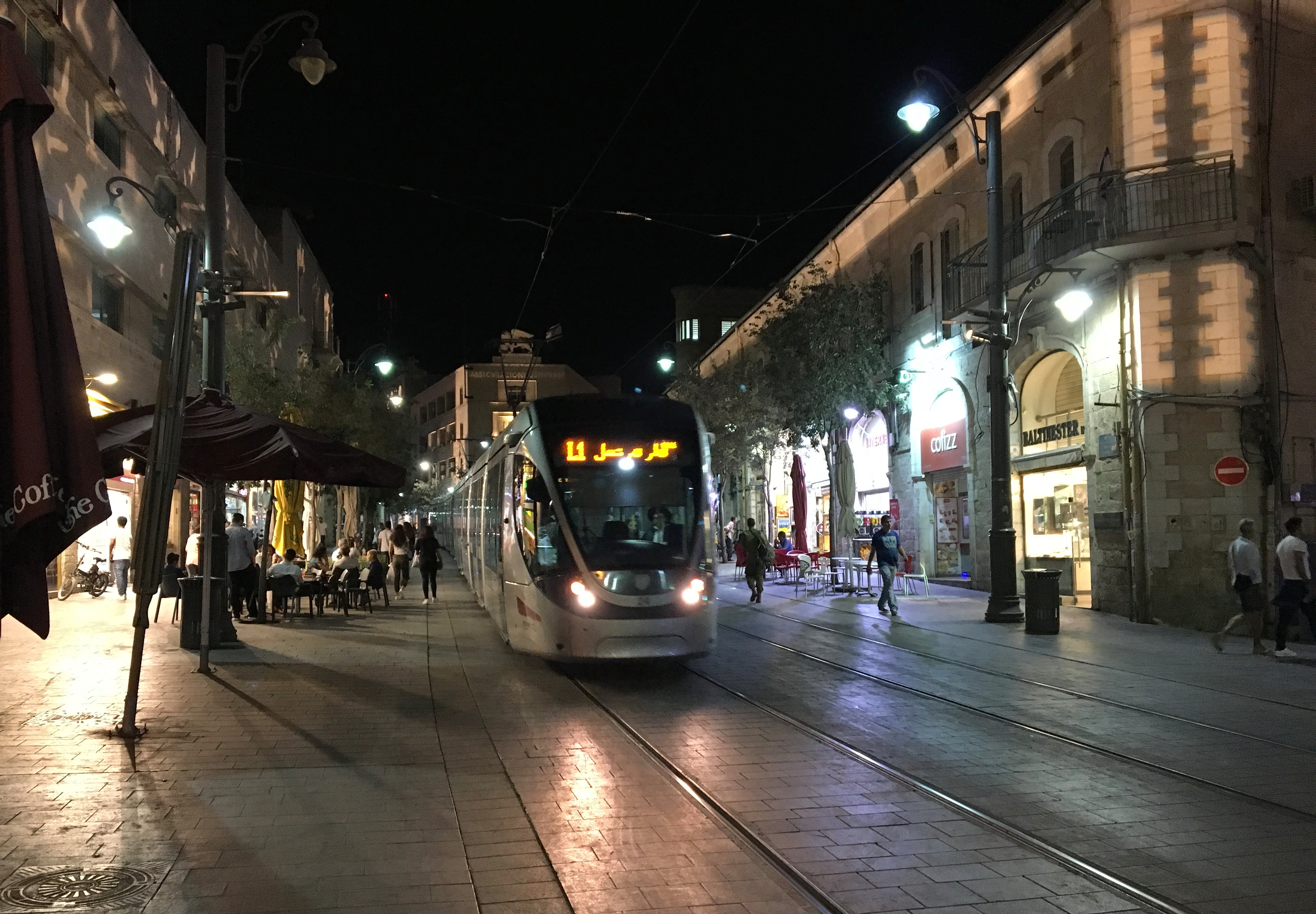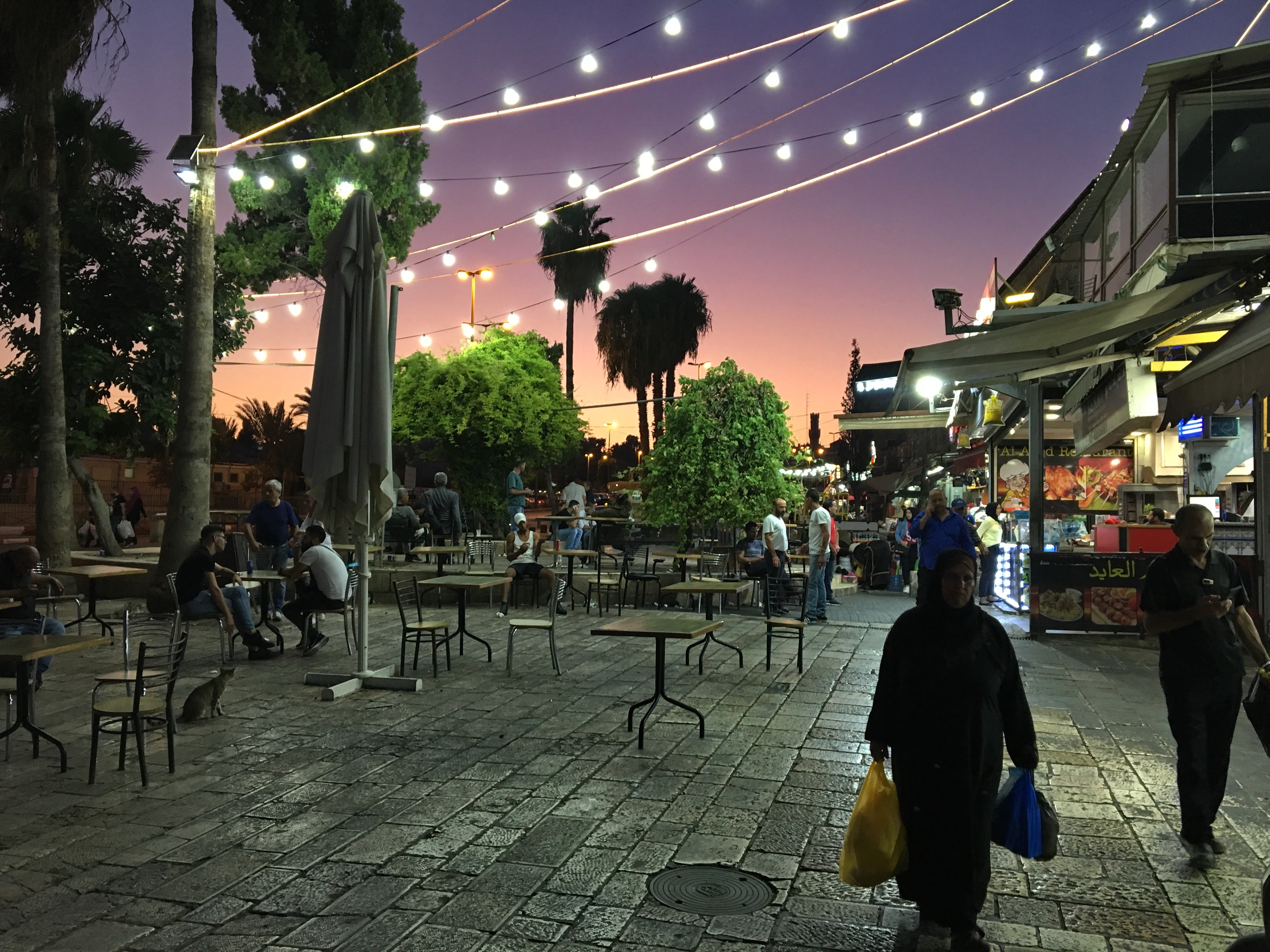JERUSALEM – On a hot afternoon in early September, the lingering sound of the adhan – the Islamic call to prayer, which sounds five times a day – again starts to roll across the ancient Muslim quarter of Old Jerusalem.
From the magnificent golden Dome of the Rock and the Al-Aqsa mosque to the hills of Bethlehem, the words in worship of Allah are joined by a chorus from loudspeakers on distant minarets, echoing all over the Palestinian part of the ancient city.
In the melting heat, swarms of people rush around the giant, chaotic oriental bazaar near Jerusalem’s Damascus Gates, its numerous shop stalls groaning with sweets and spices, expensive, delicate silks, and hookahs.
But only a few minutes’ walk beyond the old city walls and the Muslim culture and lifestyle disappear in a snap. In the city’s western part, populated by Jews, there are instead fancy boutiques, restaurants, and modern glass office buildings with neon signs in Hebrew and English scripts, rather than Arabic.
The city, with its 5,000 years of history, is the focus of the discord between two old human civilizations. It has been riven in half by the Israeli-Palestinian conflict.
Jerusalem is enjoying a period of relative calm at the moment, but the city nonetheless remains trapped in the limbo of a stalled peace process that has shown few signs of progress in the last few years. The sacred city of Christianity, Judaism, and Islam seems further than ever from peace.
With the Trump administration sticking to an unequivocally pro-Israel position, and Palestinian outrage being spurred by Islamic radicalism, a compromise over Jerusalem, painful for both sides, is not even a distant prospect.

A city tram moves through the Jaffa Street in Jerusalem on Sept. 3. (Illia Ponomarenko)
Split and disputed
September 2018 saw two big anniversaries in the Arab-Israeli peace process: that of the 1978 Camp David accord, which led to the groundbreaking peace treaty between Israel and its arch-enemy Egypt, and that of the 1993 Oslo agreements, that resulted in the formation of the Palestinian Administration in Gaza and the West Bank, the first step towards a future Palestinian state.
But 40 and 25 years respectively after those events, the final chapter of the decades-long struggle is not even close to being written.
And the golden hills of Jerusalem, or al-Quds (“the Holy One”) as it is named in Arabic, is as always at the center of the dispute.
Today, a total of 882,700 people live in the city, and since its inception in 1948, Israel has deemed Jerusalem its “eternal and sacred” capital, citing thousands of years of Jewish history and Biblical claims. But the Palestinian Authority also sees the city as its capital, with East Jerusalem being home to more than 327,000 Palestinians.
After the Six-Day War of 1967, Israel regained control of East Jerusalem from the Jordanian army, and more than 50 years on Israel still has full control of the entire city.
However, the United Nations and most of the world’s countries see East Jerusalem as the Israeli-occupied capital of a future Palestinian state.
The divisions between the two peoples, reluctantly sharing one city, are visible in many aspects of everyday life.
East Jerusalem lags behind the Jewish part in terms of living standards, employment, and average income. According to figures provided by the Jerusalem Institute of Policy Research, more than 75 percent of Palestinians in the city now live below poverty line, while for the Jewish population the figure is 29 percent.
Similar to the difference between the Jewish and Arab settlements in the West Bank, the Palestinian districts of Jerusalem have considerably poorer trash collection, housing, and public transport services.
That said, the Palestinians in Israeli-occupied East Jerusalem are better off than their compatriots in the West Bank, and much better off than the Palestinians living in the Gaza Strip, an economically depressed area controlled by the Islamic fundamentalist organization Hamas and under a tight siege by Israeli forces.
In East Jerusalem, seeing an Arab public bus driver wearing expensive wireless Apple earphones is not uncommon, while many of the Palestinian girls and women sitting in the bus, swathed in burkas or black paranjas even in the stuffy heat, can often be seen holding pricy smartphones.
Demographic tendencies are also slowly shifting the city’s population balance: the number of Palestinians in the city is steadily increasing due to the higher birth rate in Arab families. Over the five decades since 1967, the Palestinian share of the city’s population has increased from some 29 percent to almost 40 percent, and this Arab portion of the urban community is gaining more influence.

A Palestinian woman walks through a street market place in central Jerusalem on Sept. 3. (Illia Ponomarenko)
Political statement
A few dozen kilometers away from Jerusalem, road signs on Israeli highways leading to the city warn in Hebrew, Arabic, and English: “No bare shoulders.” In the religious capital of the world, strict conservative morals dominate, and believers enforce their rules.
Some 67 percent of the Jewish population of the city are religious, while up to 96 percent of the Palestinians are practicing Muslims, and religious differences mark out the sharp divide between the city’s two populations.
To prevent violence breaking out over access to Jerusalem’s holy sites, the three competing religious communities in the city (there is also a Christian presence, itself split between several denominations) must accept some uneasy compromises.
In the Old City, which hosts some of the most important holy sites for the three monotheistic religions in a tiny area of just less than one square kilometer, access to Jewish and Christian temples is open to anyone, while the Temple Mount with its Dome of the Rock Islamic shrine and Al-Aqsa mosque is currently off-limits to non-Muslims.
Although those of different faiths rub shoulders at the city’s holy sites, the dialogue between the two main communities in Jerusalem is mostly maintained by their secular minorities, both Jews and Palestinians, who tend to be much more open and liberal.
At the same time, the non-religious part of the Jewish population (33 percent) is declining, as many young non-religious Jews, weary of the highly religious environment, leave Jerusalem for other Israeli cities.
“It’s a very unique city in almost any sense of this word,” says Lior Schillat, the director general with Jerusalem Institute for Policy Research.
“It’s a city where, if you drink beer on Friday evening (the start of the Sabbath, the day of mandatory rest in the Jewish faith), you are making a political statement.”

Panorama of the Temple Mount in the Old City of Jerusalem, pictured on Aug. 31, 2016. (AFP) (Courtesy )
Status quo shattered
But the fragile balance that keeps violence in check in Jerusalem is faltering.
A big blow to stability came on May 14, when the U.S. Embassy in Israel was officially moved from Tel Aviv to Jerusalem by a landmark decision of U.S. President Donald J. Trump.
The move, hailed by Israel but condemned by the international community, triggered fierce protests all over the Muslim world, including in East Jerusalem and the West Bank.
In the Gaza Strip, protests of the relocation of the U.S. embassy to Jerusalem resulted in clashes with Israeli forces that left at least 58 Palestinians dead.
The one-sided bloodbath incited even more hatred and resentment for Israel, and the painful issue of Jerusalem again acted as a recruitment magnet for Islamist groups, attracting even more radicalized Palestinians to their relentless war against the Jewish state.
Israel, under pressure for using deadly force against unarmed protesters, claimed Hamas was deliberately making martyrs of its supporters by encouraging the protests, and commentators abroad agreed.
“Hamas is pursuing a strategy of human sacrifice in Gaza,” Thomas L. Friedman, a New York Times columnist, wrote on Sept. 18.
“(Hamas is) throwing wave after wave of protesters against the Israeli border fence to die without purpose or even much notice anymore.”
Trump’s decision to move the U.S. embassy to Jerusalem was followed by a cut in U.S. aid for the Palestinian Authority of over $200 million in late August, and his order to expel the Palestine Liberation Organization (PLO) mission from Washington in September. The moves have drawn fierce criticism of the United States by Palestinians.
Given that U.S. power brokers tend to support Israel’s position on Jerusalem and the rest of the disputed territories, a UN-brokered two-state solution, with Jerusalem as a shared capital of Israel and a Palestinian state, looks unlikely to ever be realized.
Even a win-win plan that would leave Jerusalem peacefully partitioned and the Old City turned into a special international zone open to all would still require much more readiness for painful compromise from all sides, according to Dany Tirza, the former chief designer of Israel’s 700-kilometer defensive barrier around the West Bank.
“There is a reasonable solution,” Tirza said.
“But first everyone has to recognize the rights of the other. Without it, peace will not come to this (land).”
